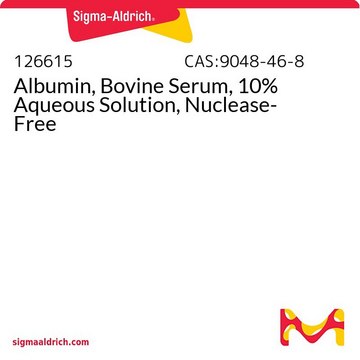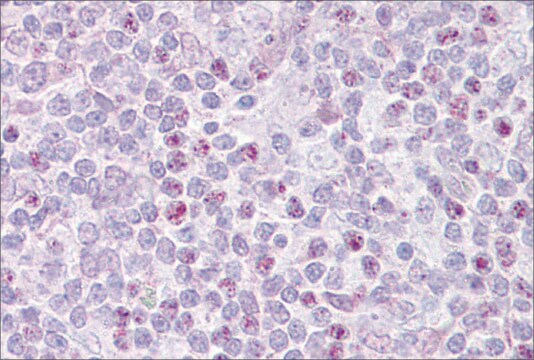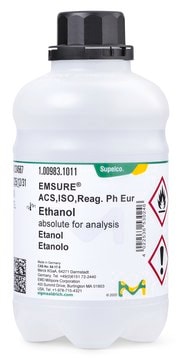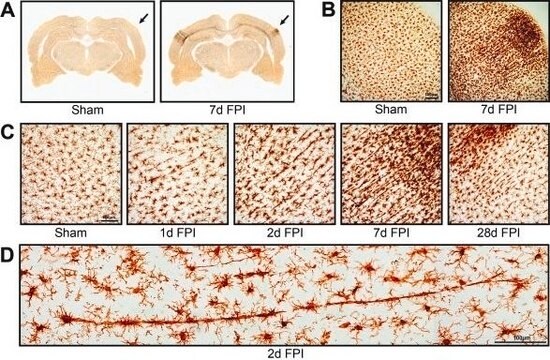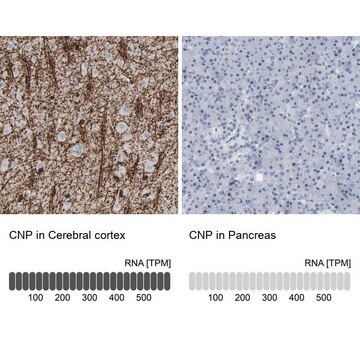AB10523
Anti-EBF-1 Antibody
from rabbit, purified by affinity chromatography
Sinônimo(s):
Transcription factor COE1, O/E-1, OE-1, Early B-cell factor
About This Item
Produtos recomendados
fonte biológica
rabbit
Nível de qualidade
forma do anticorpo
affinity isolated antibody
tipo de produto de anticorpo
primary antibodies
clone
polyclonal
purificado por
affinity chromatography
reatividade de espécies
human, mouse
técnica(s)
dot blot: suitable
immunofluorescence: suitable
immunohistochemistry: suitable (paraffin)
western blot: suitable
nº de adesão NCBI
nº de adesão UniProt
Condições de expedição
wet ice
modificação pós-traducional do alvo
unmodified
Informações sobre genes
human ... EBF1(1879)
Descrição geral
Especificidade
Imunogênio
Aplicação
Neuroscience
Developmental Neuroscience
Immunohistochemistry Analysis: A 1:500 dilution from a representative lot detected EBF-1 in mouse cryosections of wild type spinal cord tissue. (Image courtesy of Dr. Giacomo Consalez, San Raffaele Scientific Institute.)
Immunofluorescence Analysis: A 1:500 dilution from a representative lot detected EBF-1 in COS-7 cells transfected with EBF expressing plasmids. (Image courtesy of Dr. Giacomo Consalez, San Raffaele Scientific Institute.)
Dot Blot Analysis: EBF-1, EBF-2, and EBF-3 peptides from a representative lot were probed with Anti-EBF-1 (1:100 dilution). No cross reactivity to peptides for EBF-3 & EBF-2 were observed.
Qualidade
Western Blot Analysis: 2 µg/mL of this antibody detected EBF-1 in 10 µg of Raji cell lysate.
Descrição-alvo
forma física
Armazenamento e estabilidade
Nota de análise
Raji cell lysate
Outras notas
Exoneração de responsabilidade
Não está encontrando o produto certo?
Experimente o nosso Ferramenta de seleção de produtos.
Código de classe de armazenamento
12 - Non Combustible Liquids
Classe de risco de água (WGK)
WGK 1
Ponto de fulgor (°F)
Not applicable
Ponto de fulgor (°C)
Not applicable
Certificados de análise (COA)
Busque Certificados de análise (COA) digitando o Número do Lote do produto. Os números de lote e remessa podem ser encontrados no rótulo de um produto após a palavra “Lot” ou “Batch”.
Já possui este produto?
Encontre a documentação dos produtos que você adquiriu recentemente na biblioteca de documentos.
Nossa equipe de cientistas tem experiência em todas as áreas de pesquisa, incluindo Life Sciences, ciência de materiais, síntese química, cromatografia, química analítica e muitas outras.
Entre em contato com a assistência técnica
